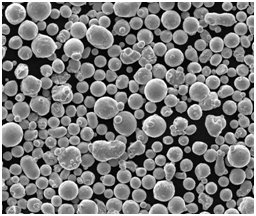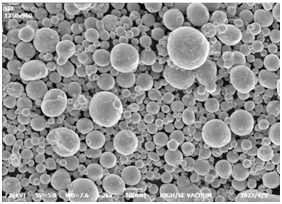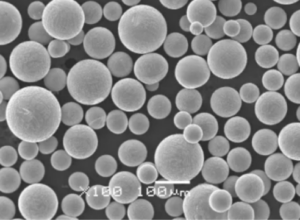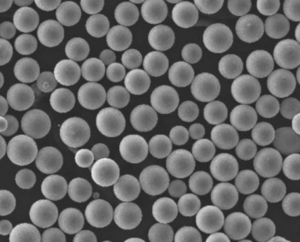Descripción general de Multi Material Jetting (MMJ)
Bienvenido al fascinante mundo de Chorro de materiales múltiples (MMJ)¡! Si estás aquí, probablemente sientas curiosidad por saber qué hace de la MMJ una tecnología destacada en el ámbito de la impresión 3D y la fabricación aditiva. Imagínate esto: tienes una impresora, pero en lugar de tinta, lanza pequeñas gotas de diferentes materiales para construir estructuras complejas capa a capa. Genial, ¿verdad? La MMJ ofrece una versatilidad y una precisión sin precedentes, lo que la convierte en una tecnología revolucionaria en sectores que van desde el aeroespacial hasta el sanitario.
¿Qué es exactamente el Multi Material Jetting? Esencialmente, es un tipo de impresión 3D que implica la deposición simultánea de múltiples materiales. Esta tecnología permite la creación de piezas complejas con propiedades variadas, combinando metales, polímeros y cerámicas en un único proceso de fabricación. Es como tener la posibilidad de pintar con una paleta de materiales, cada uno de los cuales añade su toque único a la obra maestra final.
Introducción a Multi Material Jetting (MMJ)
Antes de adentrarnos en los detalles técnicos, preparemos el terreno. El Multi Material Jetting no es sólo una tecnología futurista; ya está revolucionando nuestra forma de diseñar y fabricar productos. Al permitir la combinación de varios materiales en un solo proceso, el MMJ permite crear piezas con geometrías complejas y propiedades a medida. Esto significa que puede tener una pieza que sea flexible y rígida a la vez, o una que combine materiales conductores y aislantes, todo ello creado en un proceso sin fisuras.

Composición de Multi Material Jetting (MMJ)
Cuando hablamos de MMJ, la composición de los materiales utilizados es crucial. He aquí un desglose de los principales materiales:
| Tipo de material | Composición | Propiedades |
|---|---|---|
| Metales | Acero inoxidable, titanio, aleaciones de aluminio | Alta resistencia, conductividad y estabilidad térmica |
| Polímeros | ABS, PLA, fotopolímeros | Flexibilidad, biocompatibilidad, facilidad de procesamiento |
| Cerámica | Alúmina, circonio | Dureza, resistencia térmica, aislamiento eléctrico |
| Compuestos | Mezclas de metal-polímero, mezclas de cerámica-polímero | Propiedades mecánicas mejoradas, conductividad adaptada y flexibilidad |
Cada material aporta algo único. Los metales ofrecen robustez y durabilidad, los polímeros flexibilidad y facilidad de uso, y la cerámica es perfecta para aplicaciones a altas temperaturas.
Características de Chorro de materiales múltiples (MMJ)
Comprender las características del MMJ nos ayuda a apreciar su versatilidad y potencial. He aquí algunas características clave:
- Precisión y exactitud: MMJ puede lograr impresiones de alta resolución con grosores de capa tan finos como 16 micras.
- Versatilidad de materiales: La capacidad de combinar distintos materiales en un único proceso abre infinitas posibilidades para crear piezas multifuncionales.
- Acabado superficial: Las piezas MMJ suelen tener un acabado superficial liso, lo que reduce la necesidad de tratamiento posterior.
- Geometrías complejas: Se pueden conseguir fácilmente diseños intrincados que serían imposibles con los métodos de fabricación tradicionales.
Aplicaciones de Multi Material Jetting (MMJ)
Las aplicaciones de la marihuana medicinal abarcan una amplia gama de sectores. Veamos algunas de las más destacadas:
| Industria | Solicitud | Ejemplos |
|---|---|---|
| Sanidad | Prótesis, implantes dentales, productos sanitarios | Prótesis a medida, implantes biocompatibles |
| Aeroespacial | Componentes ligeros, ensamblajes complejos | Piezas de motores a reacción, componentes estructurales ligeros |
| Automotor | Prototipos, piezas funcionales | Salpicaderos personalizados, asientos ergonómicos |
| Bienes de consumo | Productos personalizados, modelos muy detallados | Joyas personalizadas, miniaturas intrincadas |
| Electrónica | Placas de circuitos impresos, dispositivos portátiles | PCB flexibles, smartwatches |
Todos los sectores se benefician de las capacidades únicas de la MMJ, ya se trate de crear componentes aeroespaciales ligeros pero resistentes o bienes de consumo personalizados y muy detallados.






Especificaciones y normas de chorro de materiales múltiples (MMJ)
En lo que respecta a la marihuana medicinal, el cumplimiento de las especificaciones y normas es crucial para garantizar la calidad y la coherencia. He aquí algunas de las principales especificaciones y normas:
| Parámetro | Especificación | Detalles |
|---|---|---|
| Grosor de la capa | 16-32 micras | Determina la resolución y el acabado superficial de la pieza |
| Construir volumen | Hasta 1000 x 800 x 500 mm | Tamaño máximo del objeto imprimible |
| Tolerancia del material | ±0.1% | Precisión en la deposición de materiales |
| Velocidad de impresión | 10-30 mm/hora | Varía en función del material y la complejidad de la pieza |
| Normas | ISO/ASTM 52900, ASTM F2792 | Directrices estándar para los procesos de fabricación aditiva |
Proveedores y precios Chorro de materiales múltiples (MMJ)
Encontrar el proveedor adecuado y comprender los costes que conlleva es esencial para cualquiera que desee utilizar la tecnología MMJ. Aquí tienes una tabla con algunos proveedores destacados y sus precios:
| Proveedor | Materiales disponibles | Precios | Información de contacto |
|---|---|---|---|
| Stratasys | Polímeros, metales, materiales compuestos | A partir de 50 $/kg | www.stratasys.com |
| Sistemas 3D | Polímeros, metales | A partir de 70 $/kg | www.3dsystems.com |
| HP | Polímeros | A partir de 60 $/kg | www.hp.com |
| Materialice | Polímeros, cerámica, metales | Precios personalizados | www.materialise.com |
| EOS | Metales, polímeros | A partir de 100 $/kg | www.eos.info |
Los precios pueden variar en función del tipo de material, la cantidad y el proveedor. Siempre es buena idea pedir presupuestos y comparar opciones antes de tomar una decisión.
Comparación de ventajas e inconvenientes del chorro de material múltiple (MMJ)
Cada tecnología tiene sus puntos fuertes y débiles. Comparemos los pros y los contras de la MMJ:
| Aspecto | Ventajas | Desventajas |
|---|---|---|
| Versatilidad de materiales | Puede imprimir con varios materiales simultáneamente | Limitado por la compatibilidad de los materiales |
| Precisión | Alta resolución y precisión | Menor velocidad de impresión en comparación con la impresión monomaterial |
| Complejidad | Capaz de producir geometrías complejas y piezas multifuncionales | Requiere software y conocimientos avanzados |
| Acabado superficial | El acabado liso reduce la necesidad de tratamiento posterior | Dependiendo de la aplicación, puede requerir algún acabado |
| Coste | Rentable para producir piezas complejas de bajo volumen | Los costes iniciales de instalación y material pueden ser elevados |
Descripciones detalladas de los modelos de polvo metálico
Ahora, vamos a sumergirnos en algunos modelos específicos de polvo metálico utilizados en MMJ, destacando sus propiedades y aplicaciones únicas:
- Acero inoxidable 316L: Conocido por su resistencia a la corrosión y su solidez, el 316L es ideal para implantes médicos y equipos de procesamiento de alimentos.
- Titanio Ti6Al4V: Ligera y resistente, esta aleación se utiliza habitualmente en aplicaciones aeroespaciales y biomédicas.
- Inconel 718: Aleación de níquel-cromo con excelentes propiedades a altas temperaturas, perfecta para álabes de turbinas y motores de cohetes.
- Aluminio AlSi10Mg: Esta aleación combina ligereza con buenas propiedades mecánicas, lo que la hace adecuada para piezas de automoción y aeroespaciales.
- Cromo-cobalto (CoCr): Conocido por su resistencia al desgaste y biocompatibilidad, el CoCr se utiliza en implantes dentales y ortopédicos.
- Acero martensítico envejecido (MS1): Este acero de alta resistencia se utiliza en utillaje y componentes sometidos a grandes esfuerzos.
- Aleación de níquel 625: Resistente a la corrosión y a las altas temperaturas, esta aleación se utiliza en procesos químicos y aplicaciones marinas.
- Cobre (Cu): Con una excelente conductividad térmica y eléctrica, el cobre se utiliza en electrónica e intercambiadores de calor.
- Acero para herramientas H13: Conocido por su dureza y resistencia a la fatiga térmica, el H13 se utiliza en fundición a presión y moldeo.
- Oro (Au): Más allá de su atractivo estético, el oro se utiliza en electrónica y dispositivos médicos por su conductividad y biocompatibilidad.
Cada modelo de polvo metálico tiene sus usos y ventajas específicos, lo que convierte a la MMJ en una tecnología versátil para diversas industrias.

Preguntas más frecuentes
| Pregunta | Respuesta |
|---|---|
| ¿Qué es Multi Material Jetting (MMJ)? | MMJ es una tecnología de impresión 3D que deposita varios materiales simultáneamente para crear piezas complejas. |
| ¿Qué materiales pueden utilizarse en la MMJ? | Metales, polímeros, cerámicas y materiales compuestos pueden utilizarse en la MMJ. |
| ¿Cuáles son los beneficios de la marihuana medicinal? | Alta precisión, versatilidad de materiales, acabado superficial liso y capacidad para crear geometrías complejas. |
| ¿Cuáles son las limitaciones del MMJ? | Costes de configuración iniciales elevados, velocidades de impresión más lentas y problemas de compatibilidad de materiales. |
| ¿Qué sectores se benefician de la marihuana medicinal? | Sanidad, aeroespacial, automoción, bienes de consumo y electrónica. |
| ¿Cómo se compara la MMJ con otros métodos de impresión 3D? | La MMJ ofrece mayor versatilidad y precisión de materiales, pero puede ser más compleja y costosa. |
| ¿Cuál es el volumen típico de construcción de MMJ? | Hasta 1000 x 800 x 500 mm, según la máquina. |
| ¿Existen directrices estándar para la marihuana medicinal? | Sí, las normas ISO/ASTM 52900 y ASTM F2792 proporcionan directrices para los procesos de fabricación aditiva. |
| ¿Cómo elijo a un proveedor de materiales para MMJ? | Compare la disponibilidad de materiales, los precios y la reputación de los proveedores. Solicite presupuestos para obtener la mejor oferta. |
| ¿Cuáles son las aplicaciones típicas del MMJ? | Prótesis a medida, componentes aeroespaciales ligeros, piezas funcionales para automóviles y mucho más. |

